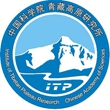Sessions 4:Geo-sciences
Guoxiong Wu

Character introduction
Experience
1983-1984: Visiting Scientist, European Center for Medium Rang Weather Forecast (ECMWF);
1989-1991: Senior visiting research professor, GFDL/Princeton University,
Honors
2015: AGU Fellow;
2015: Honorary Fellow of IUGG;
2012: Honorary Fellow of the Royal Meteorological Society, UK;
1997: Academician of the Chinese Academy of Sciences, China
Awards and Prizes
2014: Tan Kah Kee Science Award;
2008: Science and Technology Progress Prize, Award in Meteorology from Ho Leung Ho Lee Foundation;
2007: Second Grade of National Natural Science Prize, China;
Prof. WU is mainly engaged in weather dynamics, climate dynamics and atmospheric general circulation. He is closely involved in studies on the effects of the Tibetan Plateau on atmospheric general circulation, weather and climate, on the formation and variation of the subtropical anticyclones, and on the dynamics of the Asian monsoon. Over the past 20 years, WU has been actively involved in the international climate community, which include the Ordinary Member of the Executive Board of International Council of Science (2011- 2014), president of International Association of Meteorology and Atmospheric Sciences (2007- 2011), Officer of WMO/ICO/ICSU Joint Science Committee, World Climate Research Program (2005-2010). He was elected an Honorary Fellow of the Royal Meteorological Society, UK in 2012 and a Fellow of the American Geophysical Union in 2015.
1983-1984: Visiting Scientist, European Center for Medium Rang Weather Forecast (ECMWF);
1989-1991: Senior visiting research professor, GFDL/Princeton University,
Honors
2015: AGU Fellow;
2015: Honorary Fellow of IUGG;
2012: Honorary Fellow of the Royal Meteorological Society, UK;
1997: Academician of the Chinese Academy of Sciences, China
Awards and Prizes
2014: Tan Kah Kee Science Award;
2008: Science and Technology Progress Prize, Award in Meteorology from Ho Leung Ho Lee Foundation;
2007: Second Grade of National Natural Science Prize, China;
Prof. WU is mainly engaged in weather dynamics, climate dynamics and atmospheric general circulation. He is closely involved in studies on the effects of the Tibetan Plateau on atmospheric general circulation, weather and climate, on the formation and variation of the subtropical anticyclones, and on the dynamics of the Asian monsoon. Over the past 20 years, WU has been actively involved in the international climate community, which include the Ordinary Member of the Executive Board of International Council of Science (2011- 2014), president of International Association of Meteorology and Atmospheric Sciences (2007- 2011), Officer of WMO/ICO/ICSU Joint Science Committee, World Climate Research Program (2005-2010). He was elected an Honorary Fellow of the Royal Meteorological Society, UK in 2012 and a Fellow of the American Geophysical Union in 2015.
Topic: Subtropical circulation, Tibetan Plateau, and Asian Summer Monsoon
Abstract The characteristics of the land-air-sea interaction in summer subtropics possess significant impacts on climate. It was shown that different kind of diabatic heating plays different roles in the formation of the subtropical circulation where the surface sensible heating associated with the land-sea distribution plays a fundamentally important role, and the three spatial- scales of atmospheric forcing contribute in various ways to the formation of aridity/desert over the western parts of continents and wet/monsoon over the eastern parts. Thus monsoon and desert coexist as twin features.
It was identified that the onset of the Asian summer monsoon (ASM) consists of three dynamically consequential stages: the onset first occurs over the eastern Bay of Bengal (BOB) in early May, which is followed by the onset over the South China Sea in mid-May, and the Indian Monsoon onset in early June. During such an onset progression, the formation, maintenance and evolution of the South Asian High (SAH) play a significant role in generating the upper tropospheric dumping. In the lower troposphere, the development of the BOB monsoon onset vortex, the ASM onset barrier, the cross equatorial SST gradient and the forced convection over the eastern Arabian Sea also regulate the onset evolution.
In winter the Tibetan Plateau (TP) can inspire a stationary dipole-type atmospheric wave, forming a specific climate pattern in Asia. In spring, such a dipole circulation forms the unique persistent rainfall over Southern China. The TP forcing can also anchor the ASM onset over the BOB by generating the unique short- life BOB SST warm pool and modulating the SAH in the upper troposphere. In summer the thermal forcing of the Tibetan-Iranian Plateau plays a significant role in controlling the Asian monsoon by transporting water vapor from the sea to the land for the genesis of continental monsoon. The TP thermal forcing also modulates the regional climate variability in different time scales.
KEY WORDS: Climate dynamics, Tibetan Plateau, Asian summer monsoon
It was identified that the onset of the Asian summer monsoon (ASM) consists of three dynamically consequential stages: the onset first occurs over the eastern Bay of Bengal (BOB) in early May, which is followed by the onset over the South China Sea in mid-May, and the Indian Monsoon onset in early June. During such an onset progression, the formation, maintenance and evolution of the South Asian High (SAH) play a significant role in generating the upper tropospheric dumping. In the lower troposphere, the development of the BOB monsoon onset vortex, the ASM onset barrier, the cross equatorial SST gradient and the forced convection over the eastern Arabian Sea also regulate the onset evolution.
In winter the Tibetan Plateau (TP) can inspire a stationary dipole-type atmospheric wave, forming a specific climate pattern in Asia. In spring, such a dipole circulation forms the unique persistent rainfall over Southern China. The TP forcing can also anchor the ASM onset over the BOB by generating the unique short- life BOB SST warm pool and modulating the SAH in the upper troposphere. In summer the thermal forcing of the Tibetan-Iranian Plateau plays a significant role in controlling the Asian monsoon by transporting water vapor from the sea to the land for the genesis of continental monsoon. The TP thermal forcing also modulates the regional climate variability in different time scales.
KEY WORDS: Climate dynamics, Tibetan Plateau, Asian summer monsoon
Previous R. Lawrence Edwards
Next Michael Wagner








